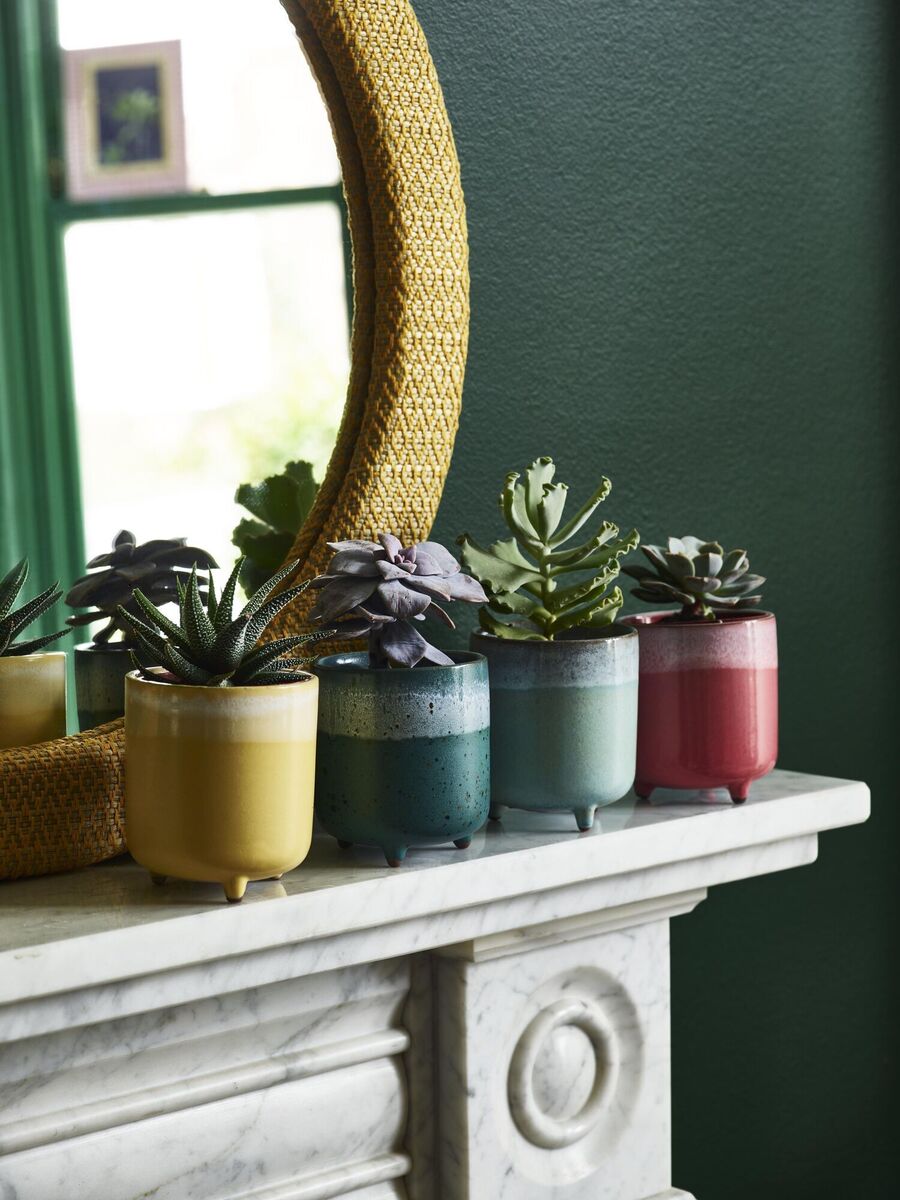How to clean cast iron and marble for the season to come

The cast-iron here roots this largely restored period room directly to its past. Picture: Furnishings by Oak Furniture Land (Ireland)
Cast-iron inserts, backs, fire furniture, stoves and entire surrounds have been around for centuries. The warming honesty of the material, its strength, fire resistance and to some extent its ability to radiate heat back to the room, provides a key material moment in old and new hearth design.
Before we even get our gloves on — if you have any idea of stripping an old cast-iron fire surround or insert of old lead paint, do yourself an enormous, life-preserving favour and have the surround and accessories removed from the house and shot-blasted by a seasoned professional. Cracks should also be welded by a specialist.
Thankfully, most existing fireplaces in good condition just beg for a loving rub to revive their warming, handsome presence. It’s actually a rather cosy, nostalgic ritual many people enjoy. The grate and irons should be lifted out and cleaned outside. Try rubbing them off with a stiff nylon brush set over newspaper, and wear a mask — this is not pleasant stuff for your hooter or lungs.
Cast iron anywhere near the heat source is generally kept lustrous and lovely under a coating of iron paste (formerly known as black lead or blacking). This is basically a safe to handle if grubby, graphite cream, distributed over the surface and shone up with a soft (shoe-style) brush or cotton cloth. The heat of the fire bakes it into the material. It can be used for the entire fireplace covering the metal of the grate, back, and any cast-iron pilasters, mantle, if you prefer that dark, Dickensian look.

There may be a clay fire back that will protect your cast-iron insert from the damage of the high heat of most modern fuels. Ensure your fire (especially if you’re a rebel, sticking with an open fire) is not burning too hot, damaging the materials it’s made from. That said, grates and baskets are consumable — generally, they will degrade and collapse over time with the consistent use of fossil fuels.
Iron is porous and will draw in moisture that could lead to permanent damage, rust and staining. Restoration specialists do use vinegar and white spirit, largely because they evaporate very quickly. Instead, let’s start with a dry, new tack cloth and clean the surfaces down. Tack cloths (€1 to €1.50 at any DIY shop) are slightly sticky and will lift contaminants and any stray bits and pieces from the iron. If you find there are rust marks that won’t shift, do not use a wet cloth or any water.
Have a go with fine (0000) wire wool first. No luck? Try a spit of WD40 and a determined rub. If you hit old cast iron with a tough wire brush there’s a good chance of taking a layer of material off with your attack. Do go easy, even on a nice fire basket.
If the surface now looks arid and a bit pale, you may need to apply a new coating of paste. Try sharing the existing paste back over the iron first, simply by using a soft cloth or a soft bristle brush on the cold iron. The advantage of a brush in this work is that it gets into the fine details on the cast relief. Physical friction is all the warmth you need here. Deploy a nylon nail or dish brush if the paste is proving stubborn to migrate.
Still dull and dry? Iron paste is fantastic, economic stuff but it can leave a sticky, gory, uneven finish if over-used. Less is more. Having worked it over the metal with a cotton cloth or brush, allow the paste to dry for four hours at least, and then buff to a pleasing, low shine. Liberon Iron Paste, €12 for 250ml, or you might prefer Stovax Grate Polish or even neat WD40 — many people do.
There are also high-heat paint types, including Hammerite High Heat in an aerosol spray, heat resistant to cracking and flaking up to 600C if you don’t want to bother with paste and polish.€13.99 for 400ml, multiple suppliers.
What if the cast-iron fireplace surround is painted or you want to paint a reclaimed, clean dry surround? The Victorians did both, so don’t feel you have to have black-leading.
Anything near the fire or hot parts of the stove or any flue pipe will require a high-heat product.
We’re talking about a decorative product. For this reason, don’t paint a grate, unless you’ve decommissioned the fireplace completely. Otherwise, use blacking on a working grate, fire-bars, fire-back and any hood, and have the chimney swept and checked twice a year.

To paint a cast-iron surround, the surface will need to be clean, stable and primed with Red Oxide to ensure it doesn’t degrade quietly under the topcoat. Hammerite offer a Red Oxide for €10 for 500ml, allowing you to then finish the fireplace with a metal paint with a good heat rating. Be warned - if you simply keep painting over paint, any ornamental detail will drown and soften under the layers, giving iron paste a serious advantage for that sharper, gunmetal finish.
While we’re gathered by the fire, a note here on marble. Marble is a metamorphic rock with pyrite inclusions (that rust) and a vulnerable open porous crystalline structure. Hit with liquids or oils, sealants even inappropriate waxes unsealed marble will drink them in, staining and discolouring the surfacing. It’s very hard to fix, once seriously damaged and like iron, it’s a thirsty substance that despises being seriously wetted down.
Marble, therefore, requires very gentle, inert cleaners and a surprising amount of forward planning. Follow my detailed, neurotic guide here and if in doubt limit your intervention: https://www.irishexaminer.com/property/homeandoutdoors/arid-20452174.html

Unlimited access. Half the price.
Try unlimited access from only €1.50 a week
Already a subscriber? Sign in
CONNECT WITH US TODAY
Be the first to know the latest news and updates












